Adventurous Istanbul
April 28, 2023
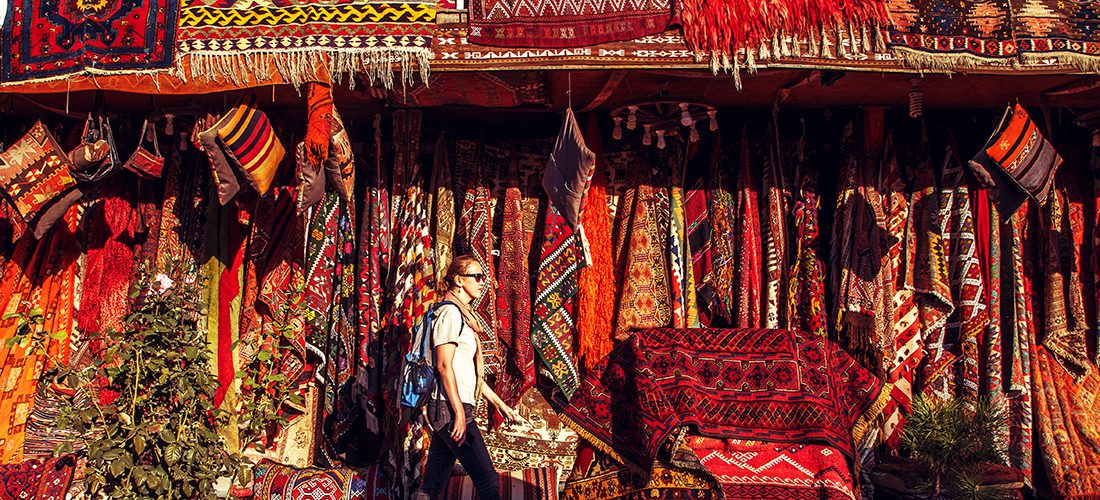
Exotic yet accessible, the centuries-old crossroads of the world offers imaginative culinary experiences, cultural splendor and Turkish delight at every turn.
by Michael J. Solender
Few world cities carry the historic, geographic or strategic significance of Istanbul, Turkey’s most storied metropolis. Istanbul is the only city on the globe spanning both the European and Asian continents, and has long been the epicenter of trade, culinary, cultural and thought exchange between Europe, the Arabian Peninsula, the Mediterranean Basin, Russia, the Balkans, Iran and beyond.
One of the world’s busiest channels, the tiny Bosphorus Strait, halves the city once known as Constantiople into two major sections and serves as the only seafaring passage linking the Mediterranean and Black seas. The city’s location as a global port and geographic hub has forever cemented its place as a center of commerce, interchange and discovery.
A raucous cacophony of cultural and historic influences is inescapable for today’s visitor and, in fact, is the primary attraction. This is especially true when it comes to Istanbul’s explosive culinary landscape. With more than 15 million full-time residents and an equal number of annual visitors, there are a lot of hungry people in The City on the Seven Hills, and gastronomic delights are found on every corner. Here’s how to best enjoy the adventure.


Start on the street
Begin on the Asian side of the city, where many of the working-class locals live, shop and eat, for an authentic look at daily Turkish life. Most likely you’ll traverse the Bosphorus Bridge (officially named the 15 July Martyrs Bridge, though rarely referred to as such). An impressive span with spectacular city and sea views, it was built in the mid-1970s to connect the two sides of the city which previously were navigated solely by ferry.
It’s best to discover the sprawling port and vast Kadikoy neighborhood with a licensed guide like Eser Sedef. A knowledgeable historian, cultural savant and Turkish gastro-expert, Sedef will ensure your visit is special. She’s adept at darting into tiny alleys for the best Turkish coffee, navigating street stalls for authentic dishes such as midye (mussels stuffed with rice and aromatics), and serving as ambassador of unfamiliar fare such as freshly baked simit. This popular roll resembles a flattened bagel — crunchy on the outside, soft and chewy inside — and is often served with a semi-firm, feta-like goat or sheep’s-milk cheese, sliced tomato, and cucumber.
Kadikoy’s narrow and cobbled streets offer a masala of fragrant enticements, from kestane kebap (roasted chestnut) vendors and bazlama (Turkish flatbread) artisans to the aromatic teas for sale on every corner. It’s easy to spend an entire day here poking around various food stalls, flower shops, wine bodegas, cheese shops, chocolate ateliers, and scores of mom and pop retailers offering linens, clothing, jewelry, crafts and gifts.
Turkish street snacks to taste include lahmacun, the ubiquitous, impossibly thin flatbread flecked with spicy minced lamb and baked in a woodfired oven. Doner, Istanbul’s beloved portable sandwich with spiced grilled lamb, beef or chicken, is served in a pillowy flatbread accompanied by grilled tomatoes, onions and bitter greens. Grilled and spiced corn known as koz misir is extremely popular: This slightly sweet, slightly savory treat is served on the cob with its own stalk handle for easy consumption.
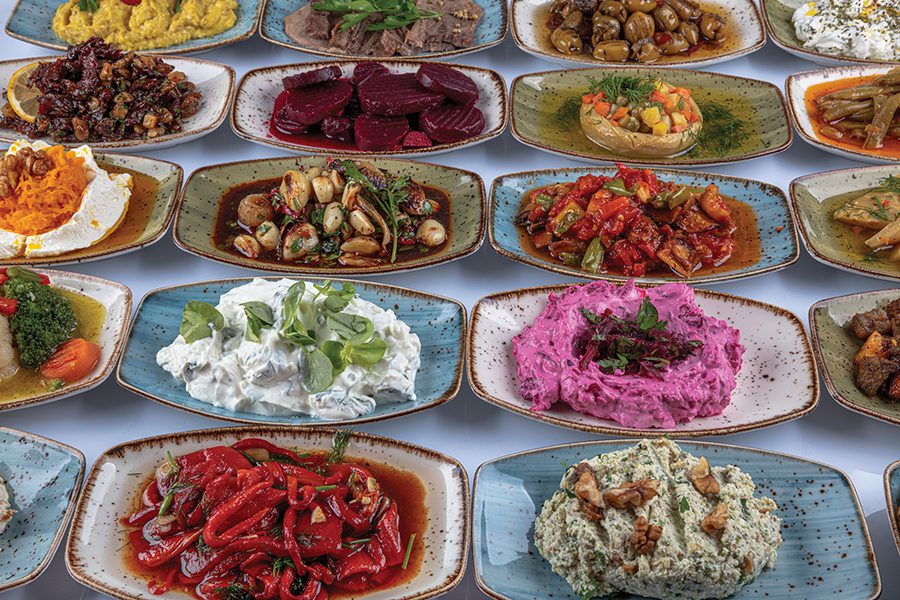
Meze, meze and more meze
Turkish meze — a woefully inadequate catch-all phrase for scores of snacks or starters — is the culinary social lubricant to almost every meal in Turkey. Nearly every restaurant, from the ultra-casual to the Michelin-starred, serves a dozen or more meze plates — hot and cold; spreads, bites and salads. Elaborate or simple, meze is abundant — often six or more shareable plates appear on the table as soon as you are seated. While meze paired with flatbread can easily stand in for a wonderful meal, be sure to save room for the main course — with Turkish tables, there’s always more to come.
There’s no better introduction to the simple-yet-sophisticated splendor of Turkish meze than at chef Musa Dağdeviren’s Ciya Sofrasi.
Dağdeviren is a traditionalist whose mission is to honor and showcase dishes, ingredients and techniques of his grandparents’ and great grandparents’ generation. “Turkish food represents a melting pot of influences,” he says through an interpreter. “So many flavors, spices, ingredients and techniques are being lost to trends and time. I’m working to preserve what I grew up with, know and love.”
Ciya is a casual eatery with a wood-burning oven cranking out flatbreads and meze, staffed by career servers who know hospitality. The wide selection of meze awaiting diners features bakla ezmesi, the bright green fava-bean spread with yogurt and dill; kiz guzeli, a beetroot, garlic, yogurt and olive salad spiced with sumac that’s sublimely piquant; and zaatar salad, a bright, acidic medley of pomegranate, orange and walnuts. Kabak cicegi dolmasi — plump zucchini flowers stuffed with sautéed onions, herbs and rice — are flash-fried to crispy golden brown, tempura-style.
Dağdeviren says he has more than 160 recipes for dried eggplant alone, emphasizing an ingredient rarely seen on western tables. One such version, kuru patlican dolmasi (baby eggplant stuffed with rice, walnuts, herbs and spices), is stewed in a tomato sauce to yield flavors both exotic and familiar.
Dishes keep coming here until diners wave the white flag, but why would you? Even the simplest dishes like roasted-carrot hummus (havuc tarator) are addictive and delight with African and Mediterranean flavors.
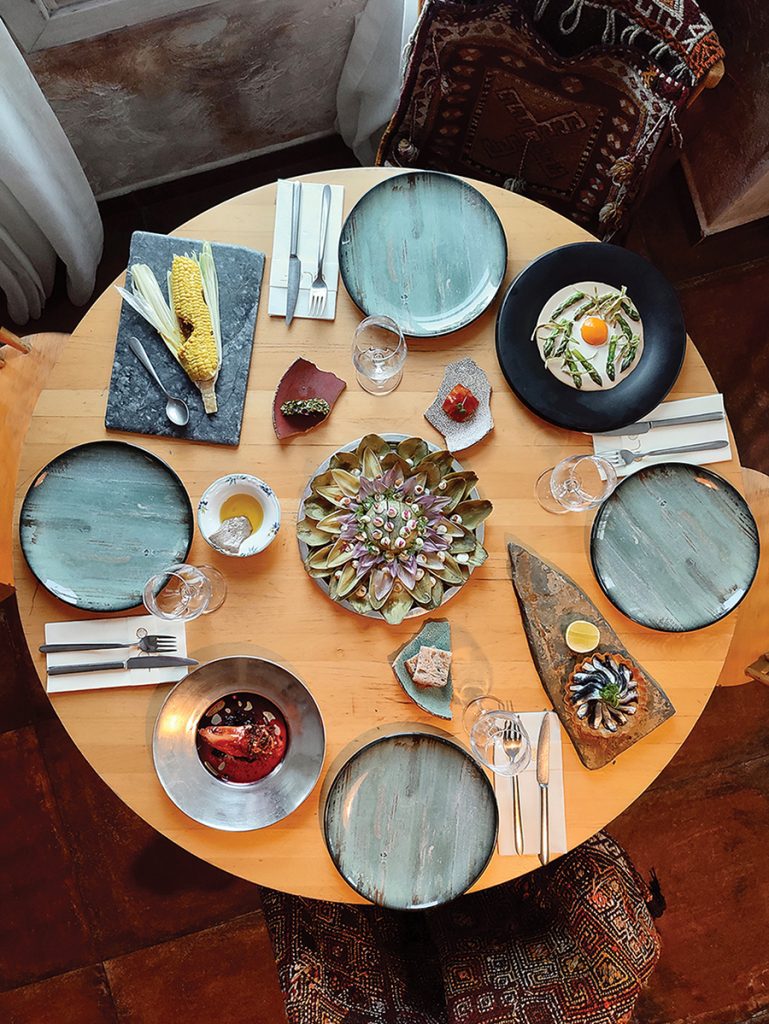
Unfussy fine dining
This year, 53 Istanbul restaurants were recognized by Michelin in the renowned dining guide’s inaugural foray into the city. Two that won’t break the bank are casual yet elegant and offer innovative (yet accessible) takes on contemporary Turkish cuisine.
Mevlut Ozkaya, a first year “Michelin Young Chef” award recipient, puts open-fire cookery at the heart of the dining experience at Murver, a stunning eatery overlooking the Bosphorus. Guests enjoy creative dishes like octopus in ash with sour pomegranate vinaigrette, clover-smoked lamb shoulder, and grilled bonito with fennel, sweet potato and mandarin orange. Buzzy, busy and visually arresting, Murver is a top see-and-be-seen hot spot.
Alaf, awarded a Bib Gourmand by Michelin (a “best value for money” recognition), bills itself as a “nomads” restaurant. Translation: It wows diners with explosive flavors packed into tiny, sexy bites artfully composed with influences from Kurdish, Armenian and Yezidi cultures. I’m still dreaming of the knockout dessert of chocolate mousse-stuffed, crisp-fried chili pepper floating in a spiced mulberry sauce.
Don’t leave Istanbul without a visit to the famed Karakoy Gulluoglu dessert spot, an imperial shrine to the multilayered king of pastry in Turkey: baklava. Istanbul’s Gulluoglu family, now in its sixth generation, continues the tradition of hand-making this 40-layer flaky pastry packed with goodies such as pistachios, walnuts, honeyed syrup, clarified butter and aromatic spices.
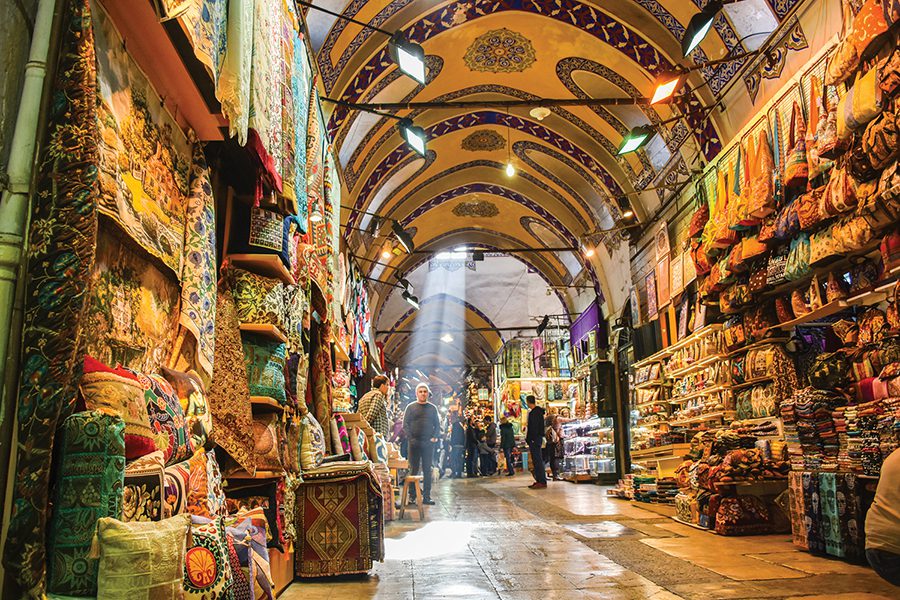
Grand Bazaar

Hagia Sophia
Cultural exploration
Istanbul’s cultural riches are vast, enough to fill months of itineraries. Topping any list is the Hagia Sophia. The one-time Church of the Holy Wisdom, this 1,500-year-old structure is today a mosque and offers visitors near unfettered access to architectural and design splendor. Nearby, the fabled Blue Mosque, built 1,200 years later, is awe-inspiring in its tilework, exterior beauty and instructive lessons in the Muslim faith.
A visit to the Yerebatan Cistern reveals the largest surviving underground water storage structure in Istanbul. Discover lessons in ancient engineering ingenuity, survival and artistry at this massive underground cavern, which today is home to concerts, art installations and ongoing archaeological digs.
Istanbul’s Grand Bazaar and Spice Market are sprawling sensory feasts that require advance planning and meeting coordinates in case you get separated from your group. The Grand Bazaar spans more than 330,000 square feet and is home to more than 4,000 shops. It covers 64 streets with 36 different access points, making it one of the largest markets in the world. Peruse Turkish carpets, jewelry, leather goods, ceramics, confections, coffee, tea and spices.
Agatha Christie slept here
Pera Palace, Istanbul’s oldest and most iconic luxury hotel, has welcomed guests to the heart of the city since 1892. Originally built to host guests embarking on the fabled Orient Express rail journey, the art nouveau-styled grand dame has accommodated the likes of Hemingway, Hitchcock and mystery writer Agatha Christie. Christie, who resurfaced here after famously being reported missing for 11 days in 1926, is alleged to have written her classic tale Murder on the Orient Express at Pera Palace, one of her favorite hotels.
Guests today thrill at the palace’s historic Old World touches, accompanied by contemporary flair. They are treated royally with indulgences such as afternoon tea in the Kubbeli Lounge, smart cocktails and period entertainment in the Orient Bar, luxe guest rooms and suites, and an attentive staff.
Tap into your inner sultan
Nonstop touring and noshing in Istanbul can leave one weary. There’s no more decadent remedy than an authentic hammam, or Turkish bath. Top-rated Ayasofya Hurrem Sultan Hamam is situated near the Blue Mosque and Hagia Sophia and pampers with glorious, marbled interiors, skilled attendants, and luxurious mineral-rich waters to deliver a personalized spa adventure second to none. SP
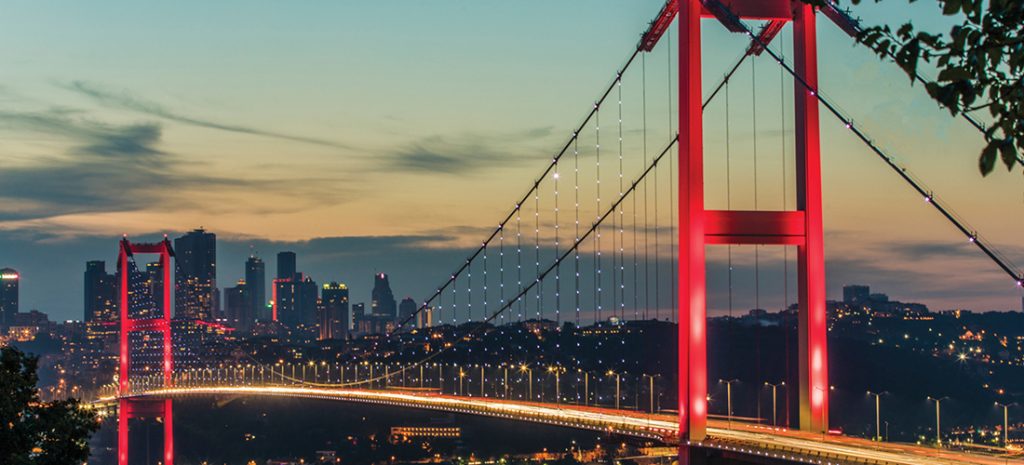
Getting there
While Charlotte Douglas International Airport doesn’t currently offer nonstop flights to Istanbul, Atlanta’s Hartsfield-Jackson does via Turkey’s national airline, Turkish Airlines. The carrier’s business-class offerings, which include an in-flight personal chef, lay-flat seats and comprehensive entertainment system, make for extra comfortable travel.




